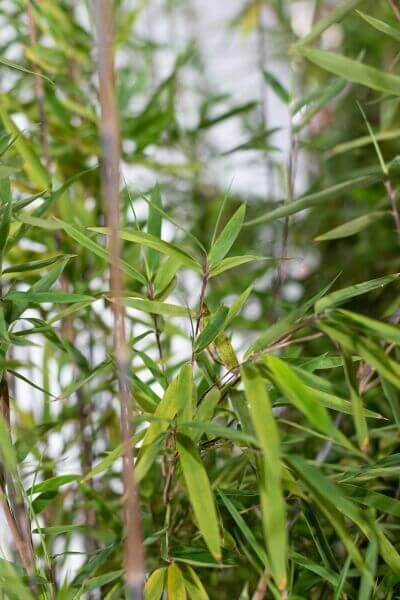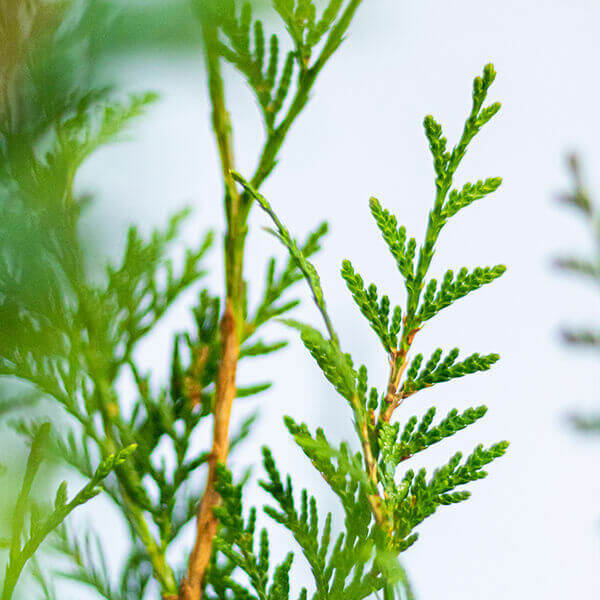Best Hedging Plants For Industrial Sites
Best Hedging Plants For Industrial Sites
Blog Article
Hedge Plants For Wildlife Habitats
Enhance your garden's appeal with rich hedge varieties such as Yew (Taxus), Thuja, Laurel, Photinia, and Bamboo, celebrated for their structural integrity and ecological advantages.
Yew and Thuja supply evergreen coverage and winter season durability, while Laurel uses rapid development and broad, aromatic leaves.
Photinia adds seasonal beauty with its dynamic red foliage, and Bamboo provides a low-maintenance, serene ambiance.
These hedges enhance air quality, reduce sound, and develop tranquil, personal spaces.
Correct planting, spacing, and maintenance guarantee energetic development and ecological harmony.
Check out how these lavish varieties can elevate your garden's beauty and well-being.
Secret Takeaways
Change Your Garden With Lush Hedge Ranges
- Select Yew for its dense, evergreen growth and exceptional durability.
- Opt for Laurel for its fast growth and broad leaves, guaranteeing fast personal privacy.
- Pick Photinia for its vibrant seasonal foliage, which turns a striking dark red.
- Utilize Bamboo for a low-maintenance, winter-hardy hedge with aesthetic appeal.
- Space plants 2-3 per meter and prune routinely for optimum development and health.
Popular Hedge Plants
When changing a garden with lavish hedge ranges, it's important to think about popular hedge plants such as Yew, Thuja, Laurel, and Photinia due to their special attributes and advantages.
Yew (Taxus) is extremely respected for its durability and thick, green development, making it a prime choice for withstanding landscapes.
Thuja is kept in mind for its evergreen foliage and robust winter strength.
Photinia adds seasonal vibrancy with red leaves that darken gradually, developing dynamic visual appeal.
Laurel provides rapid development and aromatic, broad leaves, ideal for fast privacy.
Furthermore, Bamboo is an outstanding option for ambiance, using a low-maintenance, winter-hardy choice that boosts the garden's aesthetic with its sophisticated, swaying canes.
These selections deal with a variety of horticultural requirements and choices.
Benefits of Garden Hedges
Garden hedges use a wide variety of advantages, making them a valuable addition to any landscape. These natural barriers are economical to implement and supply substantial wind protection, improving air blood circulation and adding to noise reduction. The thick foliage of hedges like Thuja and Beech makes sure privacy by obstructing exposure, developing a secluded and serene environment.
Hedges also play a crucial function in microclimate guideline, providing a steady environment that cultivates plant development and decreases temperature changes. Their intricate leaf structures filter pollutants, enhancing air quality and contributing to a much healthier garden community.
Moreover, hedges stand out in noise decrease, absorbing and deflecting acoustic waves to lower ambient sound levels. This double functionality of providing both visual and acoustic personal privacy enhances the total tranquility and visual appeal of any garden.
Planting and Upkeep Tips
For a successful hedge, careful preparation of the planting area is important. Make sure the soil has proper pH and drain to support strong root advancement.
Space the plants properly for the picked species. Water the hedge often throughout its initial growth phase, changing as needed with seasonal modifications.
Execute a methodical bug control and disease avoidance method, using chemical or organic treatments when necessary. Routinely inspect for aphids, termites, and fungal infections.
Apply mulch to retain moisture and reduce weeds. Seasonal pruning promotes dense growth and air flow, vital for plant health.
Following these standards will assist you cultivate a dynamic, well-maintained hedge that improves the charm of your garden.
Spacing and Cutting Standards
Spacing and Cutting Standards
Correct spacing and cutting are vital for cultivating healthy, visually appealing hedges. Appropriate spacing guarantees each plant gets enough nutrients, light, and air flow.
Follow these guidelines for optimal hedge maintenance:
- Spacing: Position hedge plants 2-3 plants per meter to motivate robust growth.
- Pruning Methods: Routine pruning is necessary for keeping desired hedge height and shape. Trim new growth in summer season and cut back older wood throughout winter season.
- Seasonal Care: Change cutting methods and schedules according to seasonal requirements to ensure plant health.
- Hedge Height: Routinely display and cut to maintain the desired hedge height and accomplish uniform aesthetics.
Adhering to these steps will guarantee your hedge prospers, improving both the appeal and functionality of your garden.
Picking the Right Hedge
Picking the Right Hedge
Picking the suitable hedge involves evaluating aspects such as fully grown height, foliage density, and ecological strength. Successful hedge plant selection needs comprehending each species' growth qualities and site-specific adaptability.
For instance, Yew (Taxus) provides excellent durability and dense development, while Thuja is noteworthy for its winter resilience. In addition, considering upkeep requirements is essential; fast-growing types like Laurel or Privet demand routine trimming, whereas low-maintenance alternatives like Bamboo or Ivy might be preferable for those looking for very little upkeep.
Ecological factors such as soil type, light accessibility, and moisture conditions should likewise guide the selection procedure. This careful method ensures the selected hedges will grow, offering both functional and visual benefits to the garden landscape.
Delivery and Planting Advice
To ensure your hedge plants grow, they should be delivered by specialized carriers and planted promptly upon arrival.
Follow these important actions for effective planting:
- Soil Preparation: Enrich the soil with raw material to improve drain and nutrient material.
- Planting Depth: Create a trench twice the width and equal to the depth of the root ball.
- Watering Techniques: Water thoroughly after planting, keeping the soil regularly wet but not saturated.
- Mulching: Apply a layer of mulch to keep wetness and reduce weeds.
Consumer Support and Service
Given the essential role of prompt support in horticultural pursuits, our consumer assistance group is readily available 6 days a week through telephone, e-mail, and social media to offer expert guidance and swiftly resolve any issues. Their devotion to fast action times makes sure consumer fulfillment by solving questions related to plant health, ideal planting methods, and maintenance schedules.

Within 48 hours
This comprehensive support group, strengthened by a stellar 9.3/ 10 consumer score, highlights our dedication to enhancing the gardening experience for each customer.
Often Asked Concerns
The Length Of Time Does It Consider Hedge Plants to Establish?
Hedge plants typically need one to 3 years to end up being totally established, with the exact duration varying by species and growing conditions.
Reliable care during this crucial period is important for robust development. Constant watering, watchful weed control, and suitable fertilizer application are critical in promoting strong root advancement.
For instance, fast-growing types like Laurel may establish quicker, while slower-growing varieties such as Yew may take longer. Persistent maintenance speeds up the facility process, resulting in healthy and dense hedges.
What Are the Finest Hedge Plants for Personal Privacy?
The question of the best hedge plants for personal privacy includes assessing evergreen and deciduous options.
Evergreen hedges like Thuja, Laurel, and Cypress provide year-round coverage, making sure constant privacy.
On the other hand, deciduous hedges such as Beech provide seasonal personal privacy, shedding leaves in chillier months.
Key upkeep pointers for personal privacy hedges include routine cutting, fertilizing in spring, and proper spacing-- typically 2 to 3 plants per meter.
In addition, constant watering and diligent weed elimination are vital for promoting healthy, dense development.
Can Hedge Plants Draw In Wildlife to My Garden?
Yes, hedge plants can bring in wildlife to your garden by offering essential advantages like shelter, food, and nesting sites, therefore improving local biodiversity. Yew, holly, and laurel are exceptional for drawing in birds, while ivy supports a range of bugs.
However, it is necessary to keep in mind that there are some drawbacks, such as increased maintenance to handle pests and routine upkeep. Carefully picking and maintaining hedge varieties can assist balance these drawbacks and benefits, eventually fostering a dynamic and sustainable community in your garden.
Exist Any Flowering Hedge Plants Available?
Yes, there are flowering hedge plants offered that can boost the beauty of your garden.
For example, Elaeagnus, likewise understood as Olive Willow, produces fragrant white flowers in the fall, adding a touch of beauty.
Photinia, another popular option, showcases lively red leaves that mature into a rich green, producing a vibrant visual result throughout the seasons.
To ensure these plants thrive, it's vital to practice correct pruning strategies and seasonal upkeep, such as trimming new growth in the summer and cutting back in the winter.
These measures will help maintain the health and aesthetic appeal of your flowering hedges.
How Do I Prevent Insects in My Hedge Plants?
To avoid insects in Additional reading hedge plants, utilize natural bug control techniques and preserve appropriate hedge care. Present helpful pests like ladybugs, which prey on harmful bugs, to develop a well balanced ecosystem.
Regularly inspect your hedges for indications of problem and promptly remove any afflicted parts to avoid the spread. Guarantee the health of your hedges by applying well balanced fertilizers and providing adequate water.
Use mulching to keep soil moisture and proper spacing to reduce plant tension and promote robust development. These practices collectively help in reducing pest concerns and keeping a healthy hedge.
Conclusion
In essence, selecting the right hedge ranges such as Yew, Thuja, and Laurel can change any garden into a relaxing haven. These plants provide year-round plant, boost aesthetic appeal, and offer useful advantages like sound reduction and wind defense.
Correct planting methods, accurate spacing, constant watering, and seasonal trimming are vital for ideal growth.
Reputable delivery services and skilled client assistance guarantee a seamless experience from purchase to planting, making it easier than ever to elevate your outside space.
Garden hedges use a wide variety of benefits, making them an important addition to any landscape. These natural barriers are cost-effective to carry out and provide substantial wind protection, boosting air circulation and contributing to sound decrease. The dense foliage of hedges like Thuja and Beech makes sure privacy by blocking visibility, producing a remote and serene environment.

Pruning Techniques: Routine pruning is vital for preserving desired hedge height and shape. Cut new growth in summer season and cut back older wood during winter season.
Report this page